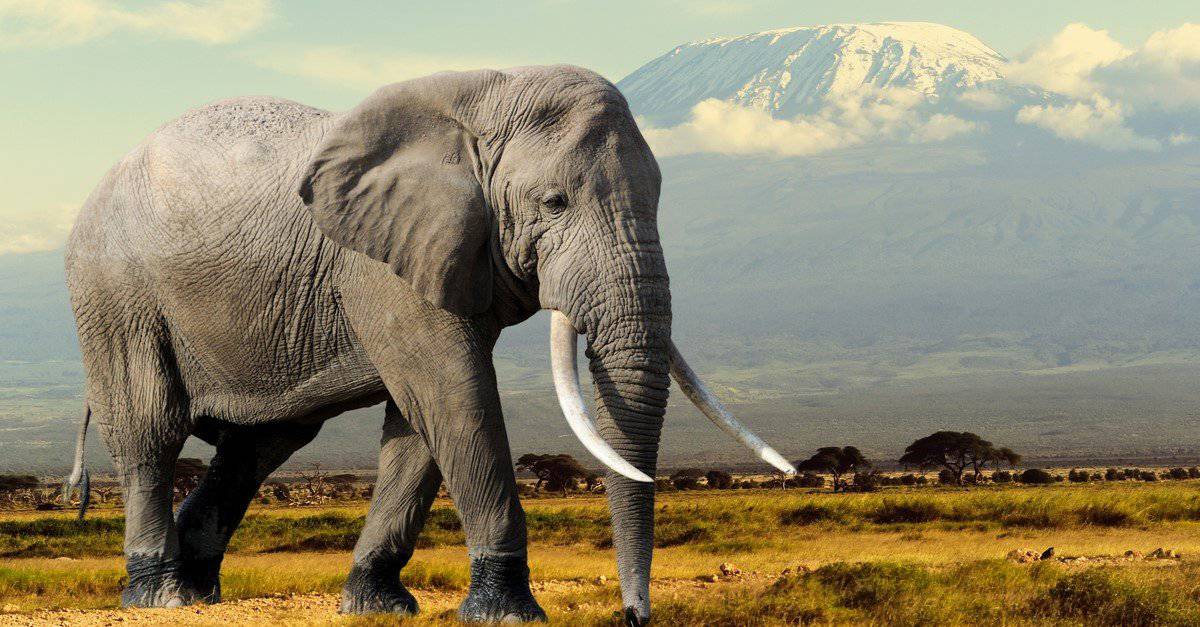Elephants are not only the largest land mammals on Earth—they are also among the most intelligent, emotional, and socially complex animals to have ever walked the planet. These majestic creatures roam the forests, grasslands, and savannas of Africa and Asia and have long captivated humans with their extraordinary appearance, symbolic importance, and gentle yet powerful nature.
Despite their grandeur, elephants today face numerous threats that have put their populations in critical danger. From poaching and habitat fragmentation to human-wildlife conflict, the survival of these iconic animals now depends largely on global conservation efforts and responsible environmental stewardship.
In this in-depth guide, we explore everything about elephants—from their biology and behavior to their evolution and conservation.
Scientific Classification and Evolutionary History
Taxonomy and Scientific Names
Elephants belong to the family Elephantidae, which falls under the order Proboscidea. Today, there are three living species spread across two genera:
-
Genus Loxodonta (African Elephants):
-
Loxodonta africana – African Bush Elephant
-
Loxodonta cyclotis – African Forest Elephant
-
-
Genus Elephas (Asian Elephants):
-
Elephas maximus – Asian Elephant
-
Subspecies include:
-
Elephas maximus indicus (Indian Elephant)
-
Elephas maximus maximus (Sri Lankan Elephant)
-
Elephas maximus sumatranus (Sumatran Elephant)
-
Elephas maximus borneensis (Bornean Elephant)
-
-
-

Evolutionary Background
Elephants share ancestry with a now-extinct group of proboscideans known as Gomphotheres, which thrived across Africa, Eurasia, and the Americas during the Miocene and Pliocene epochs. Over millions of years, these herbivores evolved into more specialized forms, including Mammuthus (woolly mammoths), Elephas, and Loxodonta.
Fossil evidence shows elephants evolving significant adaptations:
-
Enlargement of skull cavities to support tusks and trunks.
-
Transformation of upper incisors into long, durable tusks.
-
Development of intricate molars to grind tough vegetation.
-
Evolution of their signature long trunk to replace reduced neck mobility.
Asian elephants are genetically closer to woolly mammoths than to African elephants, suggesting a closer ancestral lineage between Elephas and Mammuthus.
Anatomy and Physical Features
Size and Weight
Elephants are the undisputed giants of the terrestrial animal kingdom. Adult males can weigh between 4 and 12 tons, stand 10–13 feet tall at the shoulder, and stretch up to 24 feet in length from trunk to tail. Females are generally smaller.
The African bush elephant is the largest, followed by the Asian elephant, with the Bornean elephant being the smallest subspecies.
Tusks
Tusks are elongated upper incisors made of ivory. Not all elephants have tusks—female Asian elephants and some African forest elephants may lack them. Tusks are used for:
-
Digging for water or roots
-
Defending against predators
-
Stripping bark from trees
-
Social sparring and displays
Unfortunately, these same tusks have made elephants targets for poaching.
Trunk
An elephant’s trunk is one of the most sophisticated organs in the animal kingdom. It is:
-
A fusion of the upper lip and nose
-
Capable of over 40,000–150,000 muscle units
-
Sensitive, flexible, and capable of performing delicate or forceful tasks
African elephants have two finger-like projections at the tip of the trunk, while Asian elephants have one.
Skin and Ears
Elephant skin is thick—up to 1 inch—but sensitive to touch and sunburn. Their skin has deep wrinkles which help retain moisture.
Ears help with thermoregulation:
-
African elephants have larger ears shaped like the continent of Africa
-
Asian elephants have smaller, rounded ears
Blood vessels in the ears release heat as elephants flap them, cooling their bodies.
Cognitive and Social Behavior
Social Structure
Elephants live in matriarchal societies. Herds are typically composed of related females and their young, led by the matriarch, often the oldest and wisest female.
-
Herds range from 5 to 20 individuals, but may grow larger in resource-rich areas.
-
Males leave the herd during adolescence and either live solitarily or in bachelor groups.
-
Communication involves tactile contact, rumbling infrasound (inaudible to humans), trumpeting, and chemical signals.
Emotional Intelligence
Elephants demonstrate:
-
Self-awareness (mirror tests show they recognize themselves)
-
Empathy (comforting distressed herd members)
-
Grief (mourning their dead)
-
Playfulness and cooperation
They also exhibit problem-solving, memory retention, and can use tools, such as branches to swat flies.
Diet and Feeding Habits
Elephants are strict herbivores, consuming up to 300–400 pounds of vegetation daily. Their diet includes:
-
Grass
-
Leaves
-
Fruits
-
Roots
-
Tree bark
Feeding occupies up to 18 hours per day. The digestive system is relatively inefficient—much of what they eat passes through undigested.
-
Grazing dominates during the wet season.
-
Browsing increases during dry seasons.
Contrary to popular belief, elephants do not eat peanuts in the wild.
Reproduction and Lifespan
Mating and Musth
Male elephants enter a state called musth, characterized by:
-
Increased testosterone
-
Oily secretions from temporal glands
-
Aggressive and dominant behavior
During musth, males compete for access to receptive females. Females choose mates based on strength, health, and social dominance.
Gestation and Birth
-
Pregnancy lasts 22 months, the longest of any land mammal.
-
Typically, a single calf is born.
-
Newborn calves weigh about 200–250 pounds and can walk within an hour.
Mothers nurse calves for up to six years. Young elephants remain dependent on their mothers and herd for social learning and protection.
Lifespan
In the wild, elephants live 50–70 years, sometimes longer. The oldest known elephant lived to be around 89 years old in captivity.
Habitat and Distribution
Historical Range
Elephants once roamed vast areas across:
-
Africa
-
South and Southeast Asia
-
The Middle East
-
Parts of China
Current Distribution
Today, elephant ranges have shrunk due to human encroachment:
-
African bush elephants: Grasslands and savannas across sub-Saharan Africa
-
African forest elephants: Dense tropical rainforests of Central Africa
-
Asian elephants: Forests of India, Sri Lanka, Nepal, Thailand, and parts of Indonesia (Borneo, Sumatra)
They require large home ranges—tens to hundreds of square miles—for food and migration.
Conservation Status and Threats
Major Threats
-
Poaching – Elephants are killed for their ivory tusks.
-
Habitat Loss – Deforestation, agriculture, and urban development destroy habitats.
-
Human-Wildlife Conflict – Crop raiding by elephants leads to retaliation by farmers.
-
Climate Change – Alters ecosystems and water availability.
Conservation Efforts
-
CITES (1989) banned international ivory trade.
-
China’s 2018 ivory ban helped reduce demand.
-
Elephant corridors and protected zones are being developed.
-
Ecotourism and education raise public awareness.
Population Estimates
-
African elephants (combined): ~415,000 individuals
-
Bush elephants: ~350,000
-
Forest elephants: ~65,000
-
-
Asian elephants: ~45,000–50,000, highly fragmented
-
Listed as Endangered by IUCN
-

Elephants in Captivity
Zoos and Sanctuaries
Due to their need for space, diet, and social interaction, only specialized institutions can properly care for elephants.
Leading examples include:
-
San Diego Zoo Safari Park
-
Indianapolis Zoo
-
North Carolina Zoo
-
Elephant Nature Park (Thailand)
-
The Sheldrick Wildlife Trust (Kenya)
Sanctuaries prioritize ethical treatment, enrichment, and, in some cases, rehabilitation and release.
Cultural Significance
Elephants are symbols of:
-
Wisdom, strength, and prosperity in many cultures.
-
Ganesha, the elephant-headed Hindu deity, is a remover of obstacles.
-
Revered in Buddhism, African folklore, and Southeast Asian festivals.
They appear in art, religion, mythology, and literature across civilizations.
Fascinating Facts About Elephants
-
Elephants “purr” like cats—low-frequency vibrations travel through the ground.
-
Their trunks can carry over 4 liters of water at once.
-
Elephants can recognize up to 100 individuals by sound and smell.
-
They mourn dead companions and may revisit bones of deceased herd members.
-
Their footsteps are nearly silent despite their massive size.
Elephants are among the most magnificent creatures on Earth, but their survival is increasingly under threat. There are two main groups of elephants left today: African elephants and Asian elephants. While both face serious challenges, the risks they confront differ depending on their environment. Scientists consider all Asian elephants as a single species, but genetic studies reveal that African elephants actually consist of two distinct species: savanna elephants and forest elephants.
The Elephant Populations: Decline Over a Century
Asian elephants are classified as endangered by the International Union for Conservation of Nature (IUCN), while African elephants are listed as vulnerable. In the early 1900s, several million African elephants roamed the continent, but today fewer than 350,000 remain. Asian elephants were never as numerous, with roughly 200,000 a century ago. Their numbers have now dropped to under 40,000, making their risk of extinction alarmingly high without urgent intervention.
Key Threats Facing Elephants
Habitat Loss and Fragmentation
The biggest threat to both Asian and African elephants is habitat loss. Humans expanding agriculture, logging, road construction, and urban development have drastically reduced and fragmented the large, continuous territories elephants need. This loss is especially severe for Asian elephants. Fragmented habitats not only reduce access to food and water but also isolate elephant populations, threatening their genetic diversity.
Conflict With Humans
As people cultivate crops in areas where elephants roam, the animals often raid farms, destroying food that local farmers depend on. These crop raids can wipe out entire harvests in one night, causing severe hardship for farmers who may retaliate by harming or killing elephants. These conflicts result in hundreds of deaths each year, both human and elephant, across Asia and Africa.
The Climate Crisis
Elephants require large amounts of water, which drives much of their migration and daily life. However, climate change has worsened droughts in many regions, making water scarce. Combined with shrinking habitats, this water shortage intensifies the struggle for survival.
Poaching and Ivory Trade
Poaching for ivory tusks devastated elephant populations during the last century. Despite a global ban on international ivory trade by CITES in 1989, illegal poaching continues, fueled by a persistent black market and organized crime. Most illegal ivory today comes from African elephants, with thousands killed annually by poachers.
How Can We Help Save Elephants?
Elephants are keystone species, meaning they play a crucial role in maintaining the health of their ecosystems. Protecting elephants benefits countless other species and natural habitats. Conservationists around the world focus on several key strategies:
Protecting Elephant Habitats
Since habitat loss is the greatest threat, preserving and connecting elephant habitats is critical. Less than 20% of African elephant habitats have formal protection, and in Asia, about 70% of elephants live outside protected areas. Creating large-scale wildlife corridors—linked chains of protected lands—allows elephants to migrate and access resources safely. Projects like the Terai Arc Landscape in India and Nepal aim to reconnect fragmented habitats for Asian elephants.

Reducing Ivory Demand
Stopping poaching requires not only protecting elephants in the wild but also cutting demand for ivory products. Significant progress was made in 2017 when China banned its legal ivory trade, a major step forward. Consumers worldwide can help by refusing to buy ivory and supporting laws and enforcement that protect elephants.




